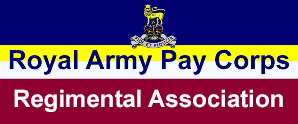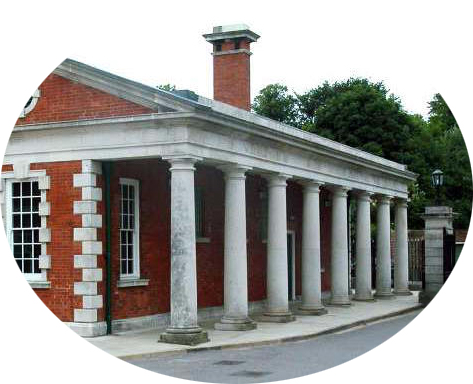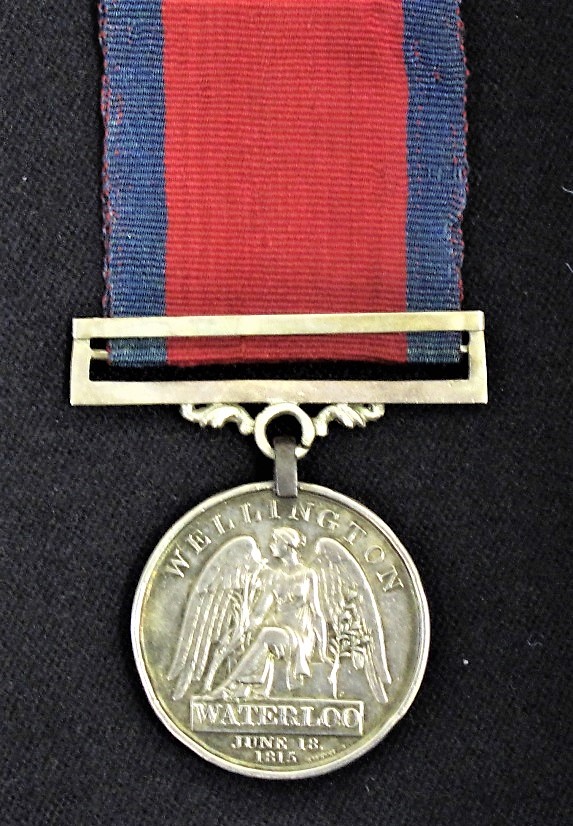
RAPC Virtual Museum

NAPOLEONIC WARS GALLERY
The Waterloo Medal
Paymaster Sergeant John Hodgson of the 16th Light Dragoons

The Waterloo Medal was the first campaign medal to be awarded to all ranks and inscribed with the name of the recipient. Previously, medals had only been awarded by the monarch or individual regiments and then to selected officers only.
Chronologically, the Military General Service Medal was the first full campaign medal awarded for service in the Napoleonic wars and carries clasps for the various engagements but this was issued retrospectively in 1848, over thirty years after Waterloo.
As with any medal of the period, its monetary value reflects the role of the regiment or unit during an individual battle or the overall campaign.
The Waterloo Medal illustrated was awarded to Paymaster Sergeant John Hodgson of the 16
th Light Dragoons. Hodgson enlisted in 1797 whilst the 16th were located in Guildford. It is not known when he was subsequently promoted but he was selected as Paymaster Sergeant under Paymaster John Burnett in 1805. Whilst there was no specific training or experience was required for either Paymaster or Paymaster Sergeant, it must be assumed that Hodgson had acquired some knowledge of arithmetic and book keeping through the Regimental School system.
The 16
th were serving in Ireland from 1803 but had returned to England by 1808. The period of ‘home service’ was short, as British forces were sent to Portugal in April 1809 to support Portuguese and Spanish forces against the French invasion of the Iberian Peninsula.
Hodgson accompanied the 16
th Lancers throughout the campaign, the 16th taking part in the battles of Talavera (1809); Fuentes d’ Onor (May 1811); Salamanca (Jul 1812) and Vittoria (1813). The also saw service in the Pyrenees and the Battle of the Nive (1813). The total casualties from the Peninsula War were 309 officers and men and 1416 mounts. During the campaign Hodgson would have kept the troop pay lists and other financial accounts up to date and assisted the Paymaster in his duties.
Following the successful end to the campaign, the 16
th were only in Britain for a short period of time before proceeding to Europe in April 1815, following Napoleon’s escape from Elba. As the opposing Allied and French forces manoeuvred into position at Waterloo on the morning of the 18th of June, the 16th were tasked with supporting the Heavy Brigade led by Major General Ponsonby. The Heavy Brigade were ordered to attack a section of French Infantry but carried on through to the artillery behind and over extended themselves. Attacked by French Lancers as they attempted to regroup and Ponsonby was killed. The brigade were saved by the timely intervention of the 16th and able to withdraw. As the French Imperial Guard failed to break through British lines and the French Army began to retreat, the 16th spent the rest of the battle harrying French forces.
‘No one was ever in such a fight before. I think Bonaparte is ruined. We charged four times. I am not touched, my mare is wounded but not badly’
Cornet Beckwith 16
th LD
The 16
th suffered 8 killed and 26 wounded from a total strength of 393.
Returning to Britain in December 1815, the 16
th were again serving in Ireland in February 1816 during which they were re-designated Lancers. The 16th Lancers remained in Ireland until 1821, when they were posted was to Sheffield but it was to be short-lived. The 16th were loyal to the King’s consort and had adopted the title of ‘Queen’s Regiment’. Following the breakdown of the relationship between George IV and the Queen and upon hearing of the 16th Lancers public toasting of their loyalty to the Queen, he had the regiment sent to India in 1822, where it remained for 24 years.
The 16
th Lancers departure for India coincided with the retirement of John Hodgson, now aged 42, by reason of ‘poor health and eyesight brought on by his campaigns’. His character was assessed as good upon discharge and he went on to become a cabinet maker.
The Waterloo Medal was purchased for the AGC Museum at auction in 2011.